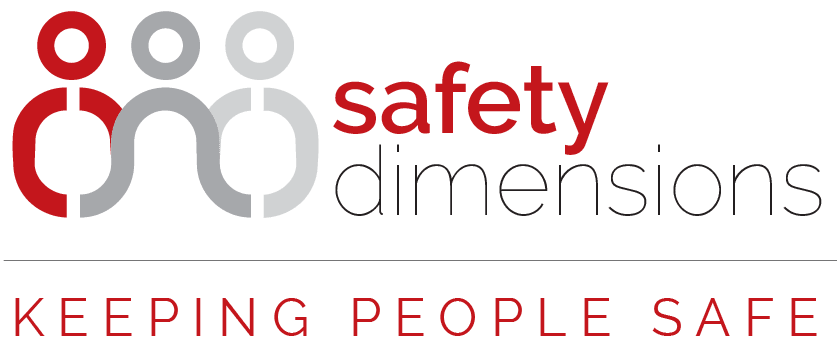
Ready to train your people in hazard identification and risk management?
We have a range of programs that will train your people in hazard identification and risk management which we can tailor specifically to your industry organisational needs.
Training can be taken as individual units of competency, or as part of one of our accredited programs:
BSB41419 Certificate IV in Work Health and Safety

Need some training? We can customise to your needs.
A near-miss is defined as an ‘unplanned event that did not result in injury, illness or damage – but had the potential to do so’.
As organisations move through their safety culture maturity the issue of near-miss reporting raises its head. A mature organisation has a culture which tracks near-misses, examines how and why the near-miss happened, then puts in controls to minimise or eliminate the risk. However not all organisations understand the purpose of near-miss reporting, or even if they say they do, they may fail to communicate benefits that reporting near-misses can bring to the safety of the organisation.
The purpose of near reporting is to allow the organisation to take cultural clues and assess their processes and procedures to determine how to prevent the near-miss occurring again with potential harm associated with it.
Some organisations celebrate low reported numbers of near-misses. However, many do this without closely determining what the low numbers mean? Did the near-misses not happen, or is it more likely that staff are just not reporting them?
Safety professionals agree that implementing a near-miss or close call reporting system works to rectify potential hazards and injuries.
Near-miss reporting is often described as a gift – because it hasn’t caused harm but instead is a wake-up call that something could have gone wrong if adequate controls weren’t put in place.
Near-miss reporting adds value in an organisation when it is treated in a proactive way – used to improve the workplace and move towards rectifying risks. At the same time support needs to be given to those who report the near-miss, and the learning that comes out of the near-miss or close call needs to filter through the whole organisation.
Why don’t people report near-misses?
There are five common reasons why employees / contractors don’t report near-misses or close calls.
- The fear of management reprisal. This could be; the fear of losing your job for speaking up, being branded a snitch or implicating others in the cause or the impact of the near-miss. For contractors it could be the fear of loss of reputation, work or an entire contract.
- Nothing happens. Near-miss reporting is seen as a ‘tick and flick’ requirement for management. The person reporting the near-miss does not ever hear or see what happens once they have submitted their report.
- The paperwork gets in the way. It’s just too much trouble to start up the paper trail which will go nowhere, so why should we all bother creating more work for everyone?
- What’s a near-miss and what do I have to report on? The uncertainty of what constitutes a near-miss and of exactly what has to be reported and sometimes even how to report it.
- It’s no biggie. The perception that it is ‘just something that happens in the line of work we do’.
10 Steps to encourage near miss reporting
- Train people in hazard identification. This has your people thinking proactively about hazards before they escalate into near misses. Safety Dimensions can help you with this.
- Remind your leaders and frontline staff that near misses being reported – especially if there have been a few in the past – are opportunities to improve, not slacken the focus on safety systems and procedures.
- Look for and share stories of where near miss reporting and rectifications have stopped a major incident or seek out and share near miss reports and how they are being responded to on a daily basis.
- Work collaboratively to work out a system to report near misses. i.e. potential for severe harm to people, plant/ assets, environment (high-risk). Keep it simple so everyone knows what to do and how to report.
- Make the reporting system easy to use and with the ability to collect useful data for rectification – this might mean you need to develop an anonymous reporting system, using technology i.e. online, an incident hotline, dedicated text message number or a mobile app.
- Encourage verbal reporting. You may need to start by doing the paper-work for your team.
- Praise whoever submits a near miss report. Let everyone know this is how they can play their part in stopping major incidents based on their reporting, before it happens again. The difference between complacency and speaking up (about a near miss or hazard) can make the difference between no one getting hurt, an injury or a tragic fatality.
- ACTUALLY DO SOMETHING. You’ve been given a wake-up call by a near-miss, now use that knowledge of what could have happened’ to put in controls to eliminate or manage the risk immediately.
- At the end of each week, month or quarter, review the types of near misses that have occurred, with your team, to highlight trends and patterns to determine coaching / training / reinforcement/ procedure or systems review that your organisation needs to undertake to strengthen the area.
- Acknowledge the fact that your team sees near miss reporting as the way things are done around here and it’s no longer a tick and flick exercise.
Ready to train your people in hazard identification and risk management?
We have a range of programs that will train your people in hazard identification and risk management which we can tailor specifically to your industry organisational needs.
Training can be taken as individual training program as part of one of our accredited programs:
BSB41419 Certificate IV in Work Health and Safety
ENQUIRE NOW
Risk Assessment including hazard identification, risk analysis.
This program helps you identify and describe the difference between a hazard and a risk and introduces a way of thinking about hazard identification and risk management as an everyday activity. Enhances the skills and capabilities of leaders in the areas of hazard identification, risk analysis, and identification and how to implement appropriate risk controls.
ENQUIRE NOW
Participate In Incident Investigations.
This program gives participants the mindset and skill set to undertake or assist in incident investigations, including how to identify and ensure all evidence and facts related to an incident (or near-miss) are understood, sequenced and analysed.
